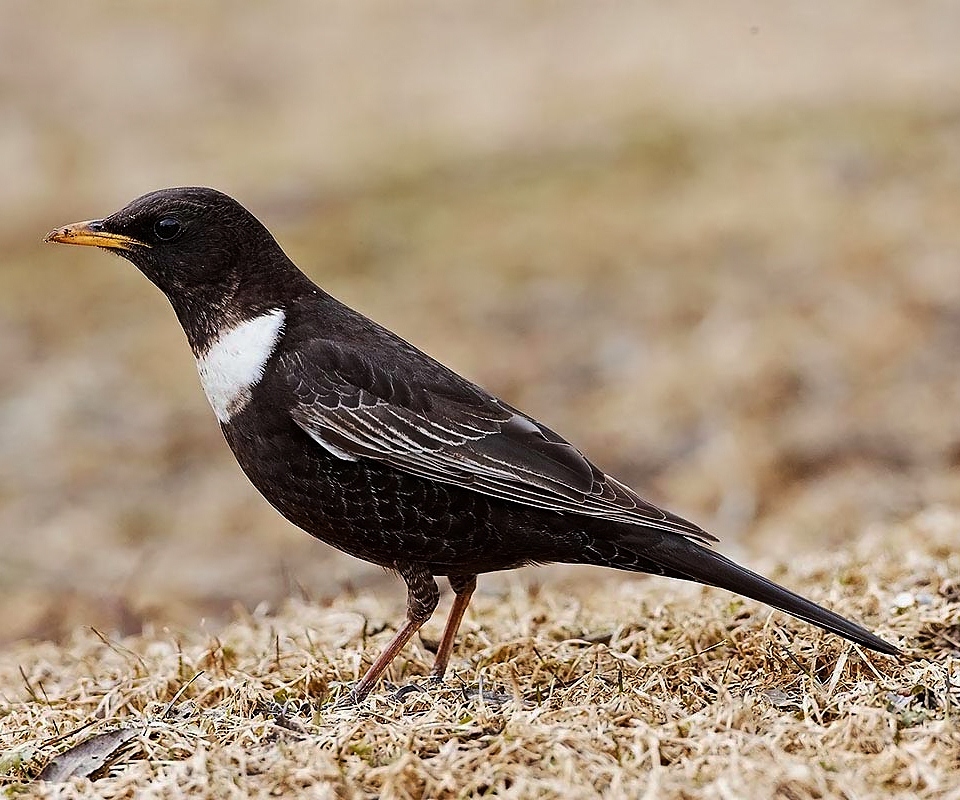 |
| Photo by Jari Peltomäki (Luonto Portti) |
Common name:
ring ouzel (en); melro-de-peito-branco (pt); merle à plastron (fr); mirlo capiblanco (es); ringdrossel (de)
Taxonomy:
Order Passeriformes
Family Turdidae
Range:
This species breeds in Scandinavia, in the northern parts of the British islands and along southern and central Europe from north-eastern Spain to southern Germany and Poland, and through the Balcans, Romania and Bulgaria into Turkey. There are also population in the Caucasus, northern Iran and Turkmenistan. Most population migrate south to winter in Iran, Iraq and around the Mediterranean.
Size:
These birds are 24-27 cm long and have a wingspan of 42-48 cm. They weigh 85-120 g.
Habitat:
The ring ouzel is found in temperate forests and scrublands, temperate grasslands, boreal forests, dry scrublands an rocky areas, especially in hills and mountainous areas. They are present from sea level up to an altitude of 300-3.000 m.
Diet:
During spring and early summer they mainly feed on insect larvae and earthworms, but also adult insects and invertebrates, rodents an lizards. During the rest of the year they feed on berries, fruits and seeds.
Breeding:
Ring ouzels breed in April-June. The nest is made of twigs, mud, leaves and moss, and placed on a rock-ledge, on the ground under low vegetation, or rarely on a tree. The female lays 3-6 pale blue eggs with brown markings, which she mainly incubates alone for 12-14 days. The chicks fledge 14-16 days after hatching.
Conservation:
IUCN status – LC (Least Concern)
The ring ouzel has a very large breeding range and the population in Europe, where over 95% of the population is found, is estimated at 930.000-2.010.000 individuals. The population is suspected to be in decline owing to ongoing habitat alteration and disturbance.







